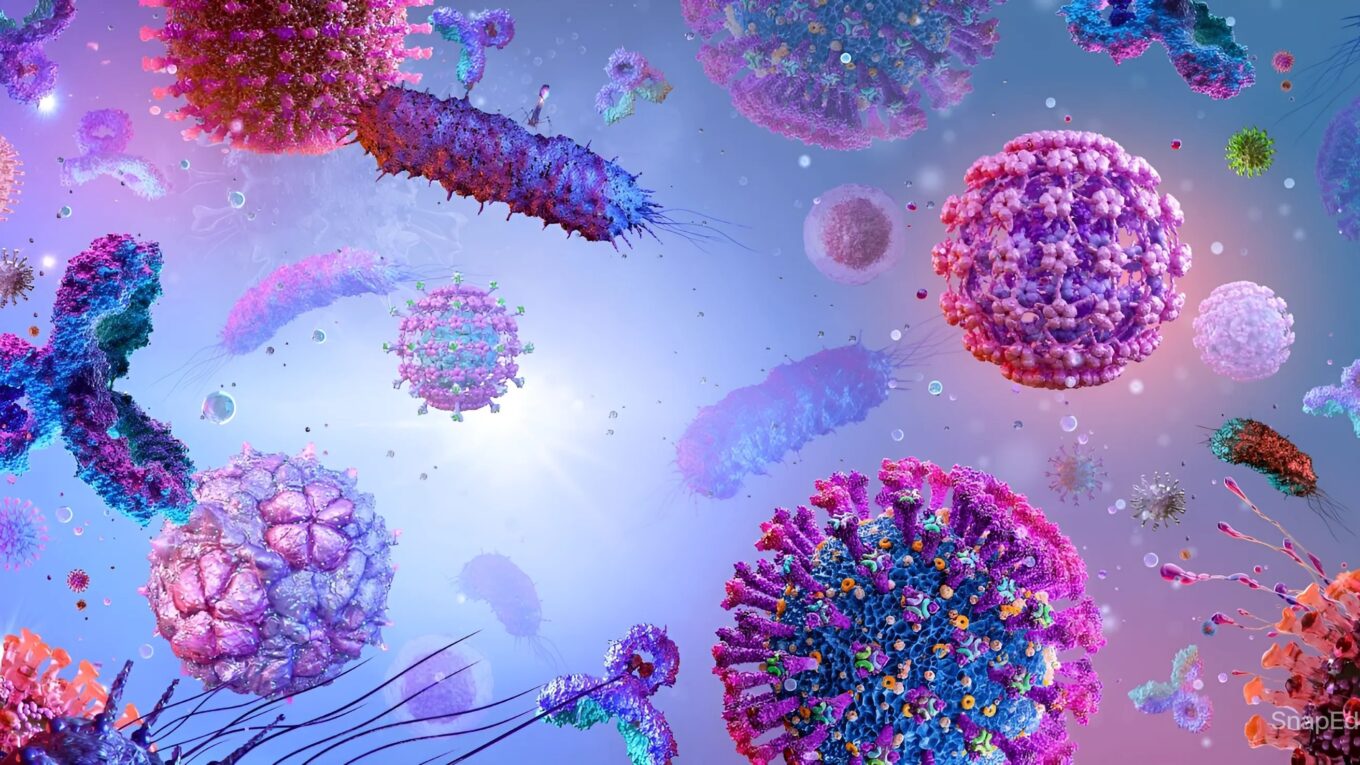Click here to Visit Facebook Page
Introduction:
Infections are caused by pathogenic microorganisms such as bacteria, viruses, fungi, and parasites. They can invade the body and multiply, leading to illness and disease. This blog will explore the different types of infections, their causes, symptoms, treatments, and preventive measures.
1. Bacterial Infections:
Causes:
Bacterial infections are caused by bacteria, single-celled microorganisms that thrive in diverse environments. Not all bacteria are harmful; some are beneficial and essential for human health. However, pathogenic bacteria can cause diseases.
Common Bacterial Infections:
– Strep Throat:
Caused by Streptococcus bacteria.
– Tuberculosis:
Caused by Mycobacterium Tuberculosis.
– Urinary Tract Infections (UTIs):
Often caused by Escherichia coli.
– Bacterial Pneumonia:
Caused by bacteria such as Streptococcus pneumoniae.
– Food Poisoning:
Caused by bacteria like Salmonella and E. coli.
Symptoms:
Symptoms vary depending on the infection but commonly include:
– Fever
– Fatigue
– Swelling and redness
– Pain and discomfort
Treatment:
Bacterial infections are typically treated with antibiotics. However, antibiotic resistance is a growing concern, necessitating careful prescription and use.
Prevention:
– Good hygiene practices
– Proper food handling and cooking
– Vaccinations
Click here to Visit Facebook Page
2. Viral Infections:
Causes:
Viruses are smaller than bacteria and require a host cell to replicate. They hijack the host’s cellular machinery to reproduce, often killing the host cells in the process.
Common Viral Infections:
– Common Cold:
Caused by rhinoviruses.
– Influenza (Flu):
Caused by influenza viruses.
– COVID-19:
Caused by the novel coronavirus SARS-CoV-2.
– HIV/AIDS:
Caused by the human immunodeficiency virus.
– Hepatitis:
Caused by various hepatitis viruses (A, B, C, etc.).
Symptoms:
– Fever and chills
– Fatigue and muscle aches
– Coughing and sneezing
– Nausea and vomiting
Treatment:
Antiviral medications can treat some viral infections, but many are self-limiting and require supportive care to relieve symptoms.
Prevention:
– Vaccinations
– Hand hygiene
– Avoiding contact with infected individuals
Click here to Visit Facebook Page
3. Fungal Infections:
Causes:
Fungal infections are caused by fungi, including yeasts, molds, and mushrooms. Fungi thrive in warm, damp environments and can affect various body parts.
Common Fungal Infections:
– Athlete’s Foot:
Caused by Trichophyton fungi.
– Ringworm:
Caused by Dermatophytes.
– Yeast Infections:
Often caused by Candida species.
– Aspergillosis:
Caused by Aspergillus species.
Symptoms:
– Itching and rash
– Redness and swelling
– Blisters or sores
Treatment:
Antifungal medications, available as creams, ointments, or oral drugs, are used to treat fungal infections.
Prevention:
– Keeping the skin dry and clean
– Avoiding shared personal items
– Wearing breathable clothing and footwear
Click here to Visit Facebook Page
4. Parasitic Infections:
Causes:
Parasitic infections are caused by parasites, organisms that live on or inside a host organism, deriving nutrients at the host’s expense. They include protozoa, helminths (worms), and ectoparasites.
Common Parasitic Infections:
– Malaria:
Caused by Plasmodium species.
– Giardiasis:
Caused by Giardia lamblia.
– Tapeworm:
Caused by various species of cestodes.
– Lice and Scabies:
Caused by ectoparasites like lice and mites.
Symptoms:
– Diarrhea and gastrointestinal distress
– Weight loss and fatigue
– Itching and skin irritation
Treatment:
Antiparasitic medications are used to treat these infections. Some parasitic infections may require prolonged treatment.
Prevention:
– Good sanitation and hygiene
– Avoiding contaminated water and food
– Using insect repellent and protective clothing in endemic areas
Click here to Visit Facebook Page
General Tips for Preventing Infections:
1. Hand Hygiene:
Regular hand washing with soap and water.
2. Vaccinations:
Keeping up-to-date with vaccinations to prevent viral and bacterial infections.
3. Safe Food Practices:
Properly cooking and storing food to prevent foodborne illnesses.
4. Avoiding Contact:
Staying away from infected individuals and using protective measures like masks and gloves when necessary.
5. Healthy Lifestyle:
Maintaining a healthy diet, regular exercise, and adequate sleep to boost the immune system.
Conclusion:
Understanding the different types of infections and their management is crucial for maintaining health and preventing disease. While treatment options vary depending on the pathogen, good hygiene practices, proper vaccinations, and prompt medical attention can significantly reduce the risk of infections. Always consult healthcare professionals for accurate diagnosis and appropriate treatment.





